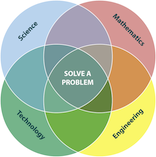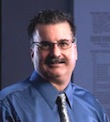Can You Pass This STEM Test?
My father used to say, “You can prove anything with statistics.” I’ve read statistic-laden articles that contend we have an overabundance of people in STEM professions now. I’ve read even more articles that say we are on the verge of a true crisis in our 21st century workforce.
Who’s right? Would you think I’m really passing the buck if I say that perhaps it doesn’t matter? The STEM movement goes far beyond preparing students for a specific job. It deals with teaching and learning an overarching set of thinking and “doing” skills that are needed in all areas of our lives.
Maybe Diane Ravitch was correct in her September 14th follow-up blog post on STEM. After an initial STEM post that seemed to belittle the push for STEM education, she wrote a follow-up commentary directly to Brian Crosby – a 30-year teaching veteran at the forefront of the STEM revolution.
Brian, an award winning fifth grade science teacher who now helps schools in northern Nevada improve STEM education, took issue with her post. In her reply, Ravitch says:
I want to assure Brian and everyone else who is teaching STEM subjects that I believe they are a deeply important and valuable part of a liberal education. I don’t think anyone should be ignorant of mathematics, science, engineering, and technology. These are hugely important skills, tools, and knowledge in our society–not only for careers but for general civic understanding and personal survival.
STEM is not science or technology or engineering or math
Still, I wonder if Ravitch really gets it when describing “STEM subjects.” STEM is not comprised of four independent subjects taught in isolation from one another. That said, it’s certainly true that in some “STEM-focused” schools, the math and science classes might as well have signs on the door that read, “Quarantined! Only science (or math) taught here! ” Technology is often taught as a separate set of skills without explicit integration to what kids are learning in science or math or art or any other subject. And where’s that “E” anyway?

“. . . I would like to raise the concern that science and math does not equal “STEM” and that a science teacher or math teacher isn’t the equivalent of a STEM teacher. Technology is in there, of course, but in particular I’m thinking about the all-important engineering piece. Good STEM lessons and projects *begin* with the engineering design process.”
Well said! The STEM movement addresses some alarm bells going off because science, math, and technology (and the arts) are still being taught in isolation instead of as an integrated curriculum. STEM integrates these subjects through an engineering design approach that involves students in looking at problems we really face and in gaining skills they need to solve these problems. When you think “STEM,” think redesigning curriculum to produce kids who think, work in teams, create and innovate, and recognize and solve problems.
STEM teaches the “how to” that will make a big difference in our 21st century workforce. And it produces students who have a deeper understanding of their subject matter as well.
There are some things we CAN predict
No, we don’t know the exact jobs that will be available by the time all students we teach enter the workforce. But we do know many of the job-related skills they need in order to be productive members of that workforce – in any profession. In fact, they need these skills to be well-rounded citizens.
Diane Ravitch ends her September 14 blog post with a statement we can all agree with.
“The hard thing is to learn how to learn, and to continue doing it long after you graduate from high school or college.”
Agreed. Now let’s recognize and celebrate the potential of STEM to do that – across the curriculum. And let’s be advocates for this approach.
Okay – here’s the STEM test . . .
Answer in 100 words or less:
What is STEM?
Think it through. You never know when you’ll be asked to give an elevator speech on that, and how you answer makes a difference in other people’s perceptions of its value.

Also: we had a great chat with Brian about STEM leadership in the comments area of this MiddleWeb post.


































